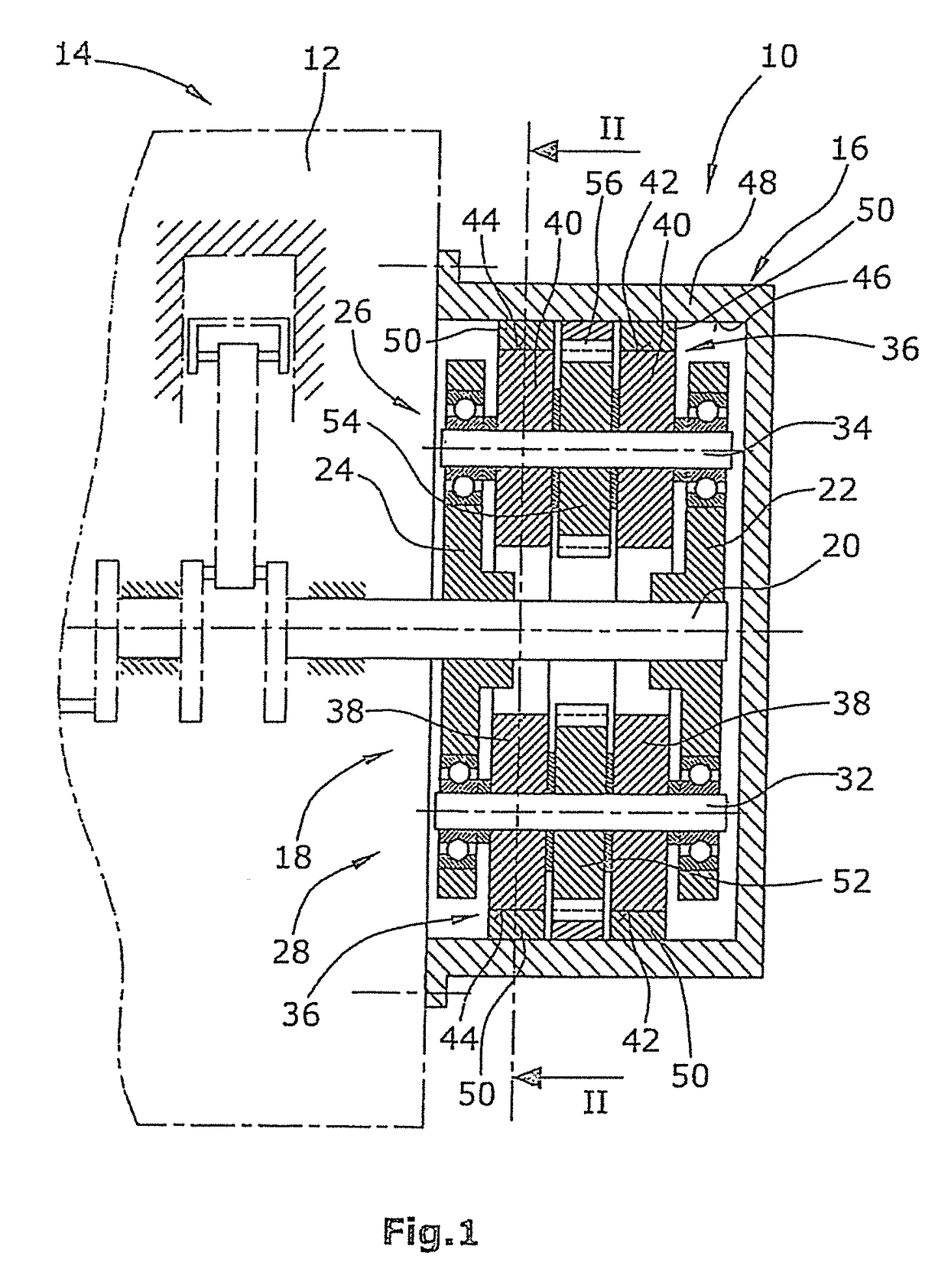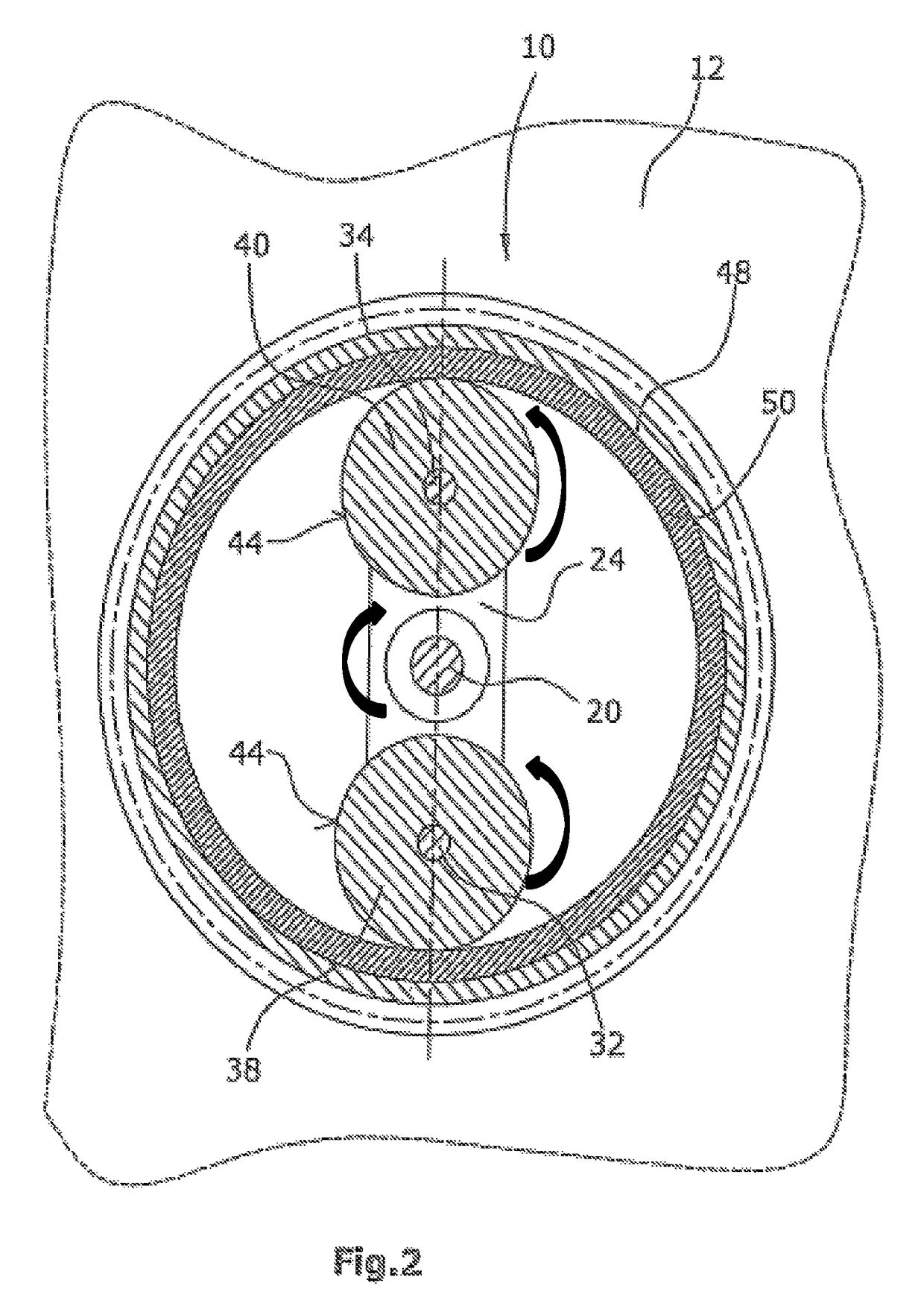Centrifugal mass arrangement for the balancing of rotational accelerations of an engine housing
a technology of centrifugal mass and engine housing, which is applied in the direction of engines, machines/engines, springs/dampers, etc., can solve the problems of engine housing vibration, unit and assembly vibration, and achieve the effect of reducing the vibration of the engine housing, suppressing or dampening the rotational oscillation arising from friction during the rolling movemen
- Summary
- Abstract
- Description
- Claims
- Application Information
AI Technical Summary
Benefits of technology
Problems solved by technology
Method used
Image
Examples
Embodiment Construction
[0021]The exemplary embodiments relate to a centrifugal mass arrangement for coupling to, for example, the crankshaft of a reciprocating-piston engine, which is preferably an internal combustion engine. The centrifugal mass arrangement, which is a multi-component flywheel, which may replace conventional flywheels on reciprocating-piston crankshafts, serves for the balancing of rolling torques which act on the reciprocating-piston engine. The multi-component flywheel has, in this case, a housing in which there is arranged a centrifugal mass carrier with roller disks arranged thereon at each end of the centrifugal mass carrier. The centrifugal mass carrier is fixedly connected to the crankshaft of the reciprocating-piston engine and accordingly rotates in the same rotational direction as the crankshaft. The roller disks roll on the cylindrical inner side of the flywheel housing and, in so doing, rotate in the same direction but oppositely to the direction of rotation of the centrifuga...
PUM
 Login to View More
Login to View More Abstract
Description
Claims
Application Information
 Login to View More
Login to View More - R&D
- Intellectual Property
- Life Sciences
- Materials
- Tech Scout
- Unparalleled Data Quality
- Higher Quality Content
- 60% Fewer Hallucinations
Browse by: Latest US Patents, China's latest patents, Technical Efficacy Thesaurus, Application Domain, Technology Topic, Popular Technical Reports.
© 2025 PatSnap. All rights reserved.Legal|Privacy policy|Modern Slavery Act Transparency Statement|Sitemap|About US| Contact US: help@patsnap.com



